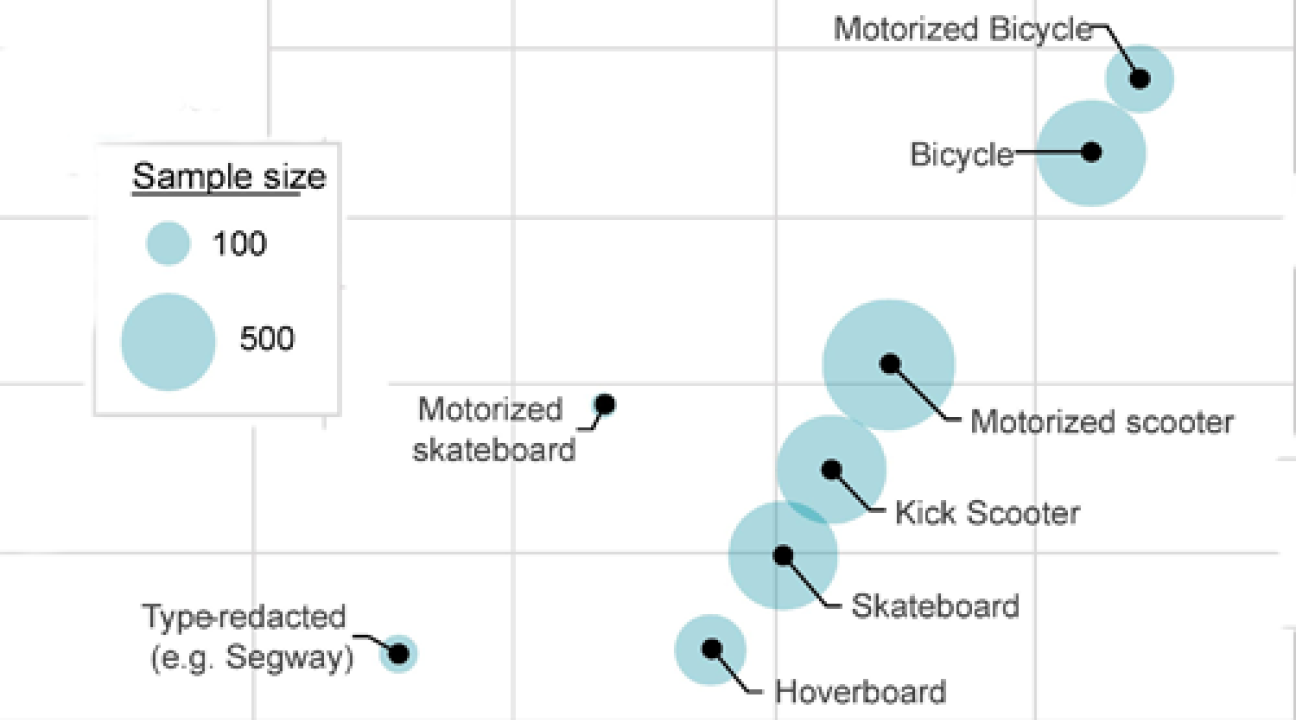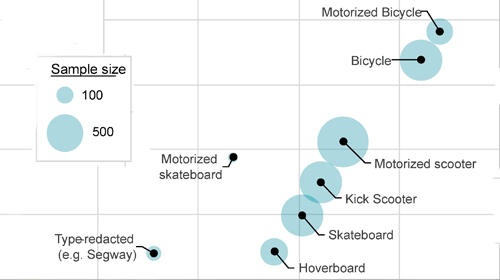Fang: Factors behind micromobility injury events
Fang, K. (2022). Micromobility injury events: Motor vehicle crashes and other transportation systems factors. Transportation research interdisciplinary perspectives, 14, 100574. https://doi.org/10.1016/j.trip.2022.100574
Potential safety issues have been one area of concern in policy debates over micromobility transportation. Existing research has mostly explored micromobility safety from a medical perspective. To inform transportation policy strategies to try and improve safety performance, this paper explores the circumstances in which injured micromobility riders sustained their injuries, with a focus on factors related to the transportation system. Data comes from the National Electronic Injury Surveillance System (NEISS), a United States national sample of emergency room visits. Information on injury circumstances is mostly not coded by default in NEISS data, but detail was scraped from reading a short narrative comment line with each case. Crashes with motor vehicles were the most frequently mentioned transportation-related injury circumstance in the data. Pavement condition and hilly train were among other measurable transportation-related factors. Crashes are particularly problematic as logistic regression modeling shows that patients who crashed with motor vehicles were about 150 percent more likely to be hospitalized and 30 percent more likely to suffer a head injury. After controlling for demographics and injury circumstances, some variation in hospitalization risk was found between micromobility devices. In particular, patients who were injured riding motorized bicycles and motorized scooters had higher likelihoods of hospitalization versus riders of human-powered bicycles. Patients riding kick scooters and devices presumed to be Segways had lower likelihoods of hospitalization versus bicycles. Read more here



